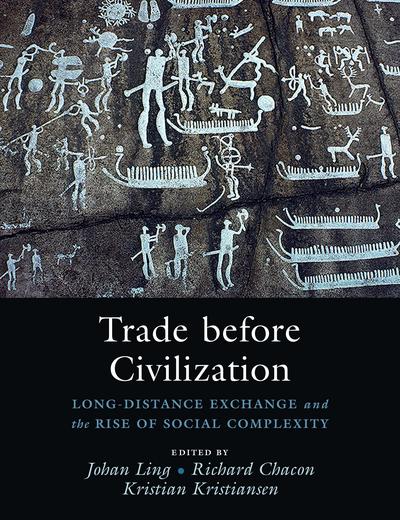Sweden (University of Gothenburg) Can the origin of class society and its institutions be linked to long-distance trade?

How a precious artefact, raw material or commodity has moved over vast distances from one region to another, crossed major seas or travelled by land over extensive territories, has occupied and intrigued scholars in archaeology and anthropology ‘over the years. This subject becomes even more intriguing knowing that no textual evidence can give us a hint or a glimpse how this was organized.
Prehistoric societies
New evidence in the form of DNA and isotopes has given us new insights into the migration and mobility of people and goods. However, the emergence of long-distance trade and exchange as an institutionalized practice remains an unexplored area.
How did prehistoric societies organize long-distance trade? How did such societies foster social institutions that facilitated long-distance exchange? Can the rise of social complexity be connected to long-distance exchange? Exactly how far did traders, raiders and visitors travel in prehistory and how were there distant exchange organized.
World-leading researchers to Gothenburg
In order to answers these questions, researchers in archaeology at the University of Gothenburg organized the conference “Trade Before Civilisation” in 2017.
The conference was attended by world-leading researchers in archaeology and anthropology, and the conference contributions have now been published in the book entitled “Trade Before Civilisation, Long Distance Exchange and the Rise of Social Complexity”.
One of the book’s editors and University of Gothenburg professor of archaeology Johan Ling adds that; “Although it took some time, it was wonderful to be able to publish the work of so many top specialists on this interesting topic” .
Focus on Stone and Bronze Age societies
The book includes concrete case studies with a focus on Stone and Bronze Age societies in Europe, but also case studies from societies in North and South America and Oceania.
The various chapters have a common research agenda that focuses on the following themes;
The Importance of Political Economy, Comparative Advantages and Elite control of transport technology for Long Distance Trade.
The links between exchange and social evolution; different forms of trade concerning egalitarian, transegalitarian and socially stratified chieftain societies.
The importance of social institutions and agents in generating surplus and extended exchange networks beyond the local group
The merit of gift exchange systems and feasts for creating alliances and trade networks.
Finance and the rise of social inequality
Image
none
In the book’s final chapter, “Political economy perspectives in trade before and beyond civilizations”, two of the researchers, Brian Hayden, professor of archaeology and Timothy Earle, professor of anthropology, summarize the book’s content.
“In their chapter there is an excellent overview of many of the theoretical aspects that this book addresses, with a particular focus on political-economy and social inequality and its connections to long-distance trade”, Johan Ling continues.
Johan Ling hopes that the book will interest archaeologists, anthropologists, historians but also conflict theorists and scholars in economy who are interested in understanding the connection between long-distance trade, the rise of social inequality and cultural development.
”Trade Before Civilisation, Long Distance Exchange and the Rise of Social Complexity””, is published at Cambridge University press www.cambridge.org/core/books/trade-before-civilization/C8DCE46E5B4CF887C8780D6824E433F7
